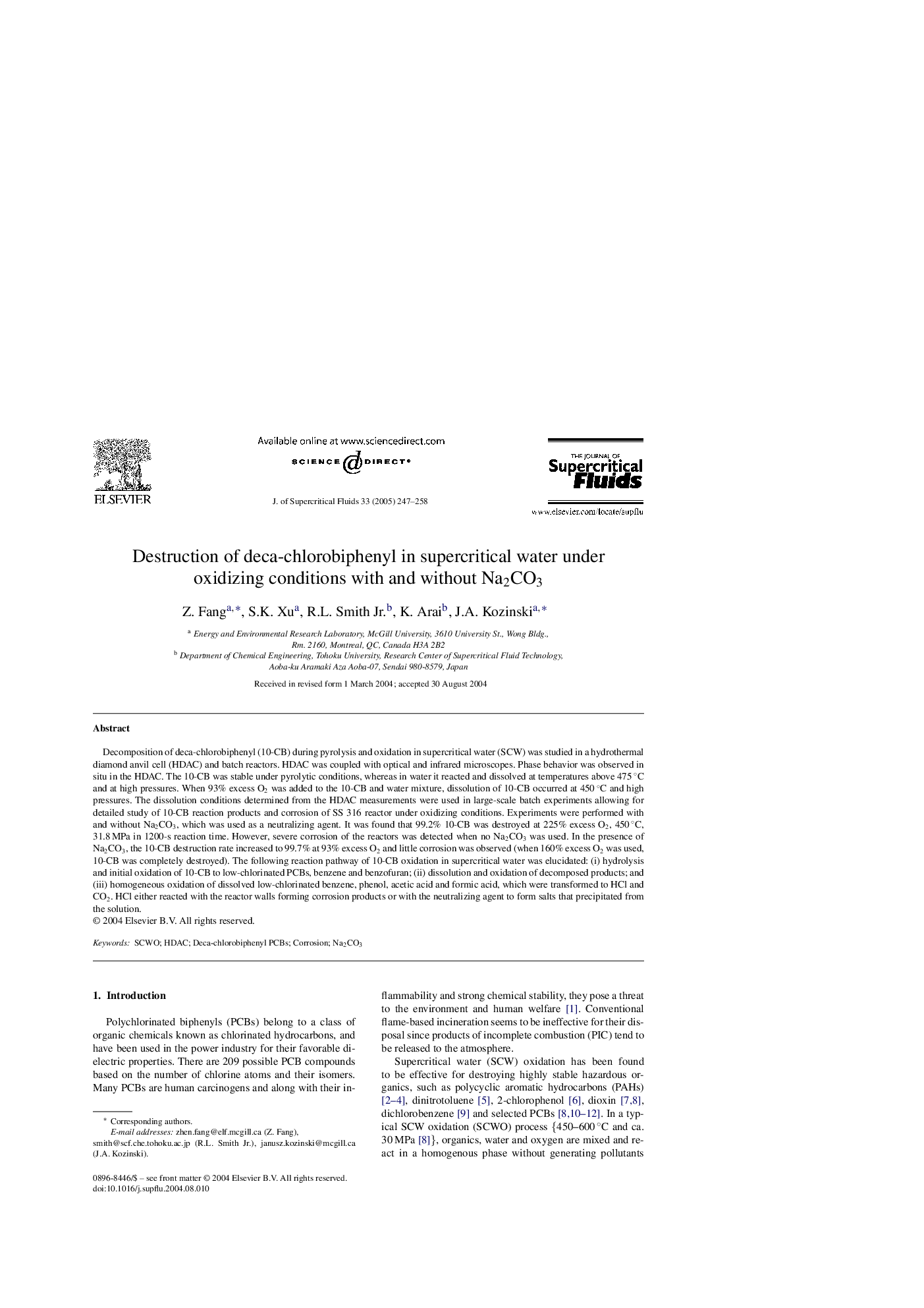| کد مقاله | کد نشریه | سال انتشار | مقاله انگلیسی | نسخه تمام متن |
|---|---|---|---|---|
| 9635844 | 1427492 | 2005 | 12 صفحه PDF | دانلود رایگان |
عنوان انگلیسی مقاله ISI
Destruction of deca-chlorobiphenyl in supercritical water under oxidizing conditions with and without Na2CO3
دانلود مقاله + سفارش ترجمه
دانلود مقاله ISI انگلیسی
رایگان برای ایرانیان
کلمات کلیدی
موضوعات مرتبط
مهندسی و علوم پایه
مهندسی شیمی
مهندسی شیمی (عمومی)
پیش نمایش صفحه اول مقاله

چکیده انگلیسی
Decomposition of deca-chlorobiphenyl (10-CB) during pyrolysis and oxidation in supercritical water (SCW) was studied in a hydrothermal diamond anvil cell (HDAC) and batch reactors. HDAC was coupled with optical and infrared microscopes. Phase behavior was observed in situ in the HDAC. The 10-CB was stable under pyrolytic conditions, whereas in water it reacted and dissolved at temperatures above 475 °C and at high pressures. When 93% excess O2 was added to the 10-CB and water mixture, dissolution of 10-CB occurred at 450 °C and high pressures. The dissolution conditions determined from the HDAC measurements were used in large-scale batch experiments allowing for detailed study of 10-CB reaction products and corrosion of SS 316 reactor under oxidizing conditions. Experiments were performed with and without Na2CO3, which was used as a neutralizing agent. It was found that 99.2% 10-CB was destroyed at 225% excess O2, 450 °C, 31.8 MPa in 1200-s reaction time. However, severe corrosion of the reactors was detected when no Na2CO3 was used. In the presence of Na2CO3, the 10-CB destruction rate increased to 99.7% at 93% excess O2 and little corrosion was observed (when 160% excess O2 was used, 10-CB was completely destroyed). The following reaction pathway of 10-CB oxidation in supercritical water was elucidated: (i) hydrolysis and initial oxidation of 10-CB to low-chlorinated PCBs, benzene and benzofuran; (ii) dissolution and oxidation of decomposed products; and (iii) homogeneous oxidation of dissolved low-chlorinated benzene, phenol, acetic acid and formic acid, which were transformed to HCl and CO2. HCl either reacted with the reactor walls forming corrosion products or with the neutralizing agent to form salts that precipitated from the solution.
ناشر
Database: Elsevier - ScienceDirect (ساینس دایرکت)
Journal: The Journal of Supercritical Fluids - Volume 33, Issue 3, March 2005, Pages 247-258
Journal: The Journal of Supercritical Fluids - Volume 33, Issue 3, March 2005, Pages 247-258
نویسندگان
Z. Fang, S.K. Xu, R.L. Smith Jr., K. Arai, J.A. Kozinski,